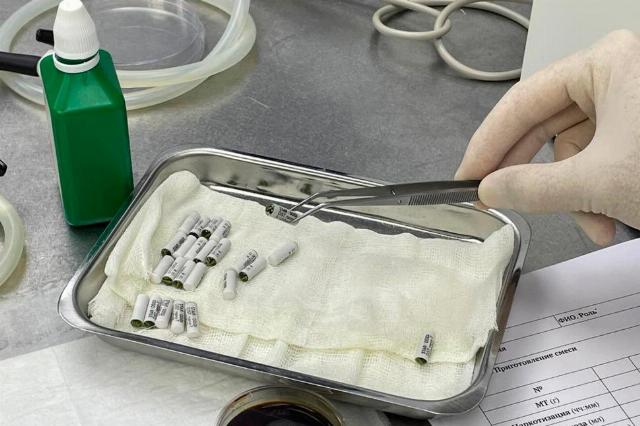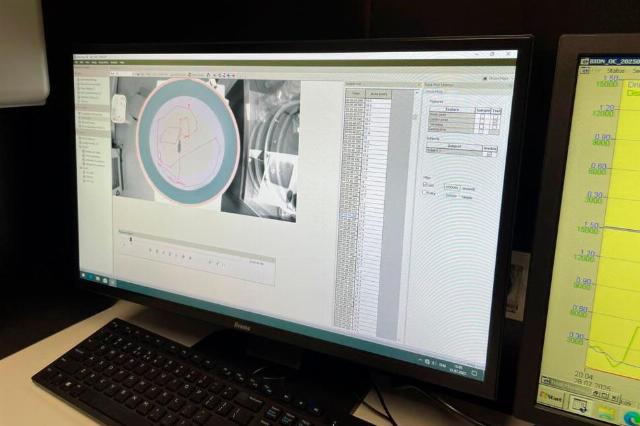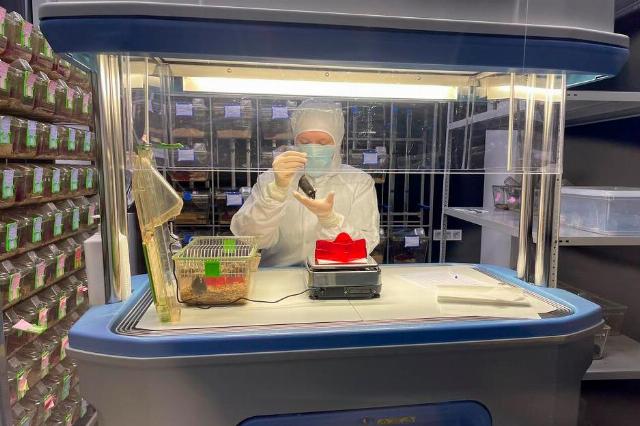65 years ago, the launch of the Sputnik-5 spacecraft took place at the Baikonur cosmodrome, on board of which were dogs Belka and Strelka. After spending 25 hours in orbit, they became the first living beings to return to Earth after a space flight. On Wednesday, August 20, the Bion-M biosatellite No. 2 is scheduled to be launched from Baikonur. For the first time, its mouse "crew" will travel to polar orbit to assess its safety for manned flights.
In an interview with TASS, the head of the Laboratory of Animal Phenotyping at the Institute of Biomedical Problems (IMBP) spoke about the goals and features of the mission. RAS Alexander Andreev-Andrievsky.
— Alexander Alexandrovich, please tell us, what is the final composition of the "crew" of the biosatellite? How many and which animals are planned to be launched into high-latitude orbit?
— Diversity is not an end in itself. 75 mice, an incalculable number of drosophila flies and various microorganisms will be launched. Plant seeds will also fly, but this is more likely the scientific and popularization side of the issue.
— In December, Oleg Orlov, director of the IMBP, reported that mice, which are more vulnerable to the adverse factors of space flight, will go into orbit. Can you tell us about them?
— Just as cows have different breeds — some dairy, others meat — there are also many different lines of mice that are needed to solve different research tasks. The main task assigned to us is to assess the safety of a high—latitude orbit. In order to do this, the most common mouse line is used, they have a rather complicated name — C57BL/6.
In the new orbit, the expected risk is cosmic radiation, different from the orbit where the ISS flies. We need to characterize the new orbit more broadly in terms of radiation, so we use additional groups of mice — in particular, genetically modified animals with weakened body defenses. Specifically, we are talking about protection from reactive oxygen species, from oxidative stress — and this is one of the main mechanisms of the damaging effects of radiation.
Previously, canaries were taken to the mines, which are more sensitive to carbon monoxide, and thus the miners learned that the mine was polluted and it was time to leave. Similarly, our mice are more sensitive to radiation, and if something is wrong, these negative effects will be more pronounced. This does not mean that they will die, but the effect will be brighter and more pronounced.
On the other hand, to confirm that this mechanism is involved, we will also use mice that are more resistant to radiation due to pharmacocorrection. This will help us to investigate exactly what happens to the body in polar orbit, demonstrate the effectiveness of the substance and, no less importantly, demonstrate the value of mice for research on drugs that astronauts will take on interplanetary flights.

© Ilya Vrubel/ TASS
Image source: © Ilya Vrubel/ TASS
— How do these 75 mice differ from each other?
— When we launch mice into space, we usually feed them pasty food so that the animals receive both food and water at the same time. On this flight, we are going to test a new technology — out of 75 mice, 15 will live on water and dry food, which allows us to solve scientific problems related to water-salt metabolism, for example. And among the 60 that will be on the pasty feed, 42 mice will be ordinary, 9 will be more sensitive to radiation, and another 9 will be more resistant.
— Please tell us about the animal feeding system.
— In our country, which is actually a reason for pride, we have a technology that allows us to keep animals in space automatically for a whole month.
And we have new equipment that allows us to do this, a sophisticated robot that takes care of them and logs data during flight.
The technology of keeping on pasty feed was based on a simple solution — not to make two systems, one of which feeds, the other feeds. It's technically simpler, it looks beautiful, but it differs from the conditions in which mice are kept on Earth. On Earth, they usually drink water and eat dry food. Therefore, we have organized this more complex approach on Bion for some mice.
— How does the new life support system differ from the one that took care of the mice at Bionem No. 1, which was launched 12 years ago?
— Ideologically, it grew out of that system, but it was completely rebuilt. It is more modern in all respects and even in terms of the basic principles embedded in the design. In terms of meaning, this is very close to what was back at the first Bion-M, but the implementation is already at a new, modern level.
— How are you planning to monitor the condition of the animals? Are you planning to do this in real time?
— Initially, all space experiments were reduced to the fact that animals were exposed in orbit, returned, and the main pool of information was received after the animals returned. This is inevitable, because it is obvious that many tasks cannot be solved without people.
We are now expanding our ability to monitor the condition of animals during flight. This is very important because it teaches us the format of work for interplanetary flights — these missions will be autonomous, there may be no operational communication with Earth.
One of the main sources of information is video. The animals will be constantly monitored, which will give us a very large amount of data. In addition, sensors have been implanted in animals that will measure temperature in some animals and heart rate in others. These are very important functions that allow you to say a lot about what happens to an animal in flight.

© Ilya Vrubel/ TASS
Image source: © Ilya Vrubel/ TASS
— It turns out that different mice will have different readings?
— Yes, different mice will have different sensors. Basically, it's the temperature — it would seem nothing like that, but in fact it's quite informative, because we monitor it continuously. We see daily fluctuations, fluctuations in activity, and different behaviors. This is a completely different level of information content. The other subgroup will have their temperature and heart rate measured.
— Are pharmacocorrection methods that will be tested on parts of mice, then people will take on long-range space flights?
— They are already taking something, and they will definitely take it, because a long flight is a serious risk, including from the point of view of radiation exposure. Currently, one of the main aspects of medical and biological support for space flight is a system, relatively speaking, of physical therapy and prevention of negative effects based on physical exercise.
In low—Earth orbit, the main impact is precisely weightlessness, so these methods will not go anywhere there — they are enough for people to fly safely for six months, a year — Valery Polyakov still holds the record, who spent 437 days in orbit. And if we are talking about long flights, then there are additional factors — first of all, radiation, but not only. Additional measures will be needed, physical education alone will not be enough.
— The spacecraft is expected to spend 30 days in orbit. Tell us, how and where are you planning to meet him on Earth? The weather in September may already be quite cool. What precautions are planned to be taken?
— The mice will fly away from Baikonur on the 20th and land a month later — on September 19 — at a training ground somewhere in the steppes of Orenburg region. It's a hot year here, so September may be hot, or it may be cold. But we hope it will just be warm, because it makes the job easier.
Mice are greeted roughly like astronauts — literally the same people. It's just like in action movies - a search operation, helicopters, all—terrain vehicles. Then the specialists open the satellite and take out the animals. A number of works are already starting right at the landing site, in the field laboratory.
— "A series of works" — do you mean dissection?
— This is a sensitive moment, because animals that we use in everyday life or for scientific purposes die sooner or later. These are not pets that we keep and take care of until they die of old age — here the animals are really subjected to necropsy.
The simplest tests will be carried out at the landing site. We will count how many mice returned alive, and tissue samples will be collected from some of them, because after a space flight, the body begins to recover very quickly, and we need to get a "snapshot" of what happened to it during the flight.
The rest of the mice return to Moscow, where they have a whole range of "entertainment" — we put them in a complex installation that allows them to register many parameters 24/7 with very high time resolution. We will monitor their recovery after the flight.
We will be able to use various tests to judge certain processes, and we will also periodically dissect animals.
— With what frequency?
— As I said, starting from the moment of landing, then on the first day, on the fifth. At first, the processes are faster, so samples are collected more often. Then the 15th and 30th days. Most systems should recover within a month, and we'll see how quickly this happens and at what cost. In the future, we will be able to create a certain basis in order to speed up recovery, or, conversely, if something bad happens, slow down these processes.
Imagine, astronauts arrive on Mars after a long flight, and they will be uncomfortable because they will have to "plant apple trees" rather than relax in a sanatorium in Kislovodsk. Their work enthusiasm needs to be ensured somehow - at the body level, this is our task.
— You mentioned that "bad things" can happen — which ones? What could possibly go wrong during a mission? How did the specialists prepare for this?
— If we could tell in advance what could go wrong, we would definitely prepare for it, and it would go like this.
In the worst case, the animals may die. We feel sorry for them—we were just talking about dissection, but that doesn't mean we don't love them or want them to die in agony. On the contrary, everyone tries to make them feel comfortable.
A lot of work has been done in the field of animal training — they live in groups of three. They need to be taught to live like this from childhood, because mice are not very kind in principle and do not really like their neighbors. Especially males. There is a somewhat chauvinistic bias in our space sphere, mostly men fly. We try to take care of the female ones too, because they are starting to fly more and more often, but nevertheless, in this flight, all 75 mice are males.
So, in difficult space conditions, it is important that there is a well—established hierarchy between the three males - this is probably the most important thing. Well, they need to be transferred to flight food, allowed to adapt, and sensors implanted — all this is done in the weeks before the flight.
— According to your data, in your opinion, according to preliminary estimates, how many years will it take to analyze the results of the mission?
— We solve very different tasks in terms of complexity. We expect to analyze the main data pool within a year after returning. We have a hot stage in the first two to four weeks, when data is collected. And the data is very different — someone has one digit, and someone has a whole array. The amount of work cannot be described in two words, and it is unlikely that it will work in twenty-two.
The video situation is particularly difficult — we have 25 cameras, each of which shoots for a whole month in a row, which should result in about 12 terabytes of recordings. And it's not enough to look at it once — to measure different parameters, you need to review it many times. In a practical way, this translates into man-hours of work.
Now we are trying to find ways to automate processing, including using AI, which will need to be specially designed for this task. While we are moving in this direction, if possible, we can free up a few years of our lives to solve new problems. Immediately after the second Bion, work will begin on the third, where, hopefully, work will go faster and we will be able to more accurately assess the orbit.
— My final question is historical and a little sentimental. The launch date of Biona-M No. 2 almost exactly falls on the 65th anniversary of the flight of Belka and Strelka. Monuments are erected to many animal astronauts, they are considered heroes. These mice, flies, and plants are flying into an orbit that no living beings have ever been launched into. Do you think that they will leave a similar legacy by taking one of the first steps in the exploration of deep space by earthlings?
— I think it will be so. Perhaps their feat will not be so integrated into popular culture, because we love dogs and for some reason they don't like mice so much. But, of course, these 75 mice, with their little bodies, will pave the way for us to new achievements.
Ilya Vrubel

